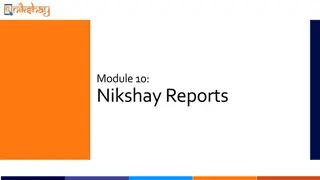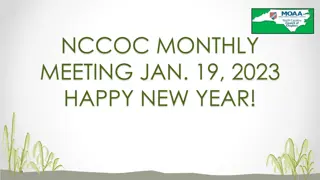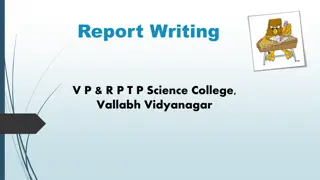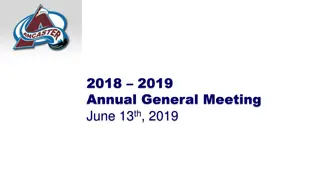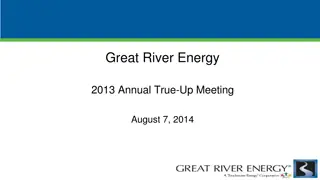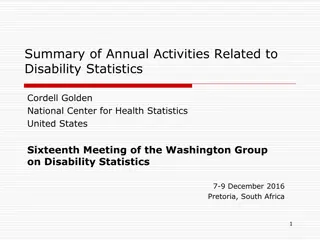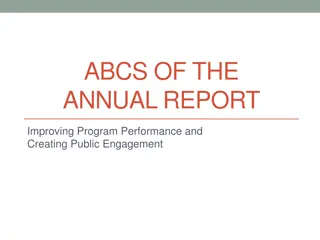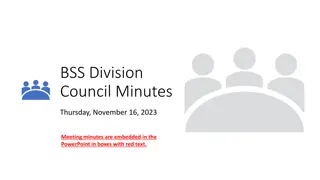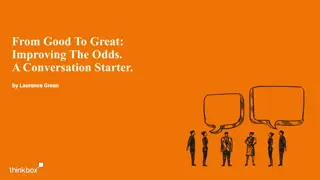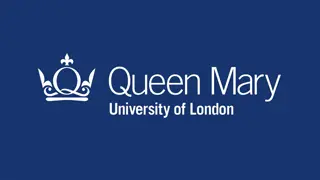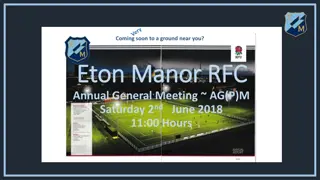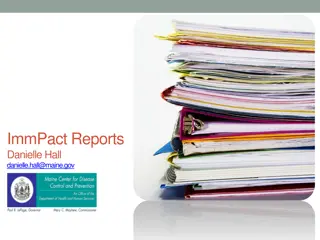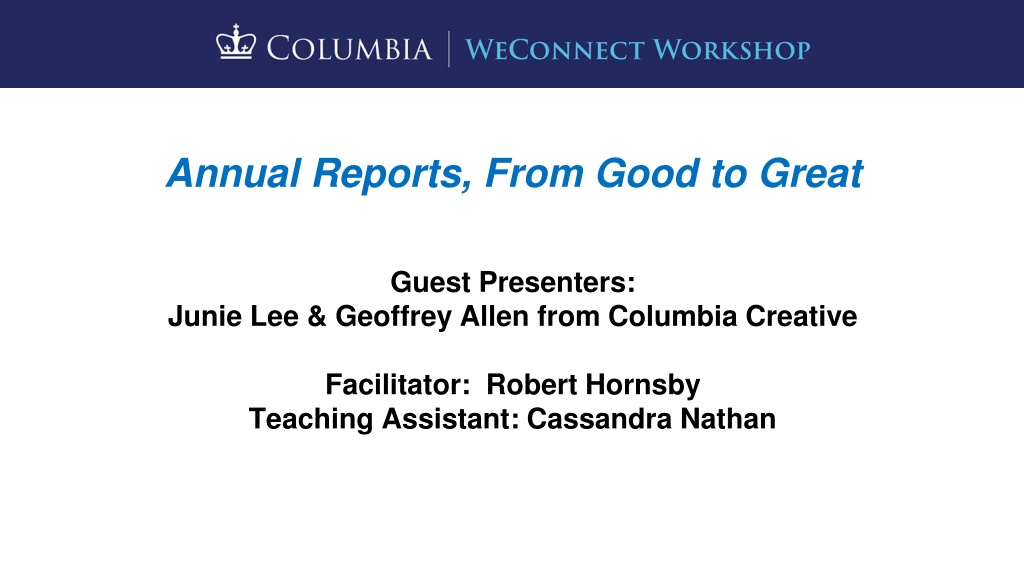
Transforming Annual Reports from Good to Great
Learn how to enhance the impact of your annual reports through effective marketing strategies, audience targeting, and a focus on outcomes rather than outputs. Discover key questions to ask and considerations to make for a more compelling and persuasive publication.
Download Presentation

Please find below an Image/Link to download the presentation.
The content on the website is provided AS IS for your information and personal use only. It may not be sold, licensed, or shared on other websites without obtaining consent from the author. If you encounter any issues during the download, it is possible that the publisher has removed the file from their server.
You are allowed to download the files provided on this website for personal or commercial use, subject to the condition that they are used lawfully. All files are the property of their respective owners.
The content on the website is provided AS IS for your information and personal use only. It may not be sold, licensed, or shared on other websites without obtaining consent from the author.
E N D
Presentation Transcript
Annual Reports, From Good to Great Guest Presenters: Junie Lee & Geoffrey Allen from Columbia Creative Facilitator: Robert Hornsby Teaching Assistant: Cassandra Nathan
To begin, ask some basic questions: Why do you produce an annual report? (List all the reasons you know.) What does your school, dept, center, institute or unit actually do with your annual report? Distribute by postal mail? To whom? Do you print copies to deliver in person (as a leave-behind ) or for display in a lobby? Who cares most about the annual report? Why? How many hours of work go into the development of the content? What are your associated production costs?
A Marketing Approach The annual report is a tool for persuasion. There are other tools, and this one should support you. If it s forgettable, it s a lot of effort that doesn t give you return on investment. Make it work for you. Set aside the ways that you hand it out or have it on display. Re-think why you need this tool, and what you want it to accomplish.
A Marketing Approach Focus on outcome not output. Focus on impact. Focus on people and let them help you tell the story. Audiences and Purpose matter most.
More questions: Audiences Who are the target audiences for your annual report (really)? Who needs it? What is persuasive to them? What are the criterion that they use to evaluate you? What are the elements that they need to decide to take action in your favor? Can you capture or leverage the audience(s) of a partner?
More questions: Purpose What do you want recipients of the annual report to do? Provide funding? Partner with you on programs? Promote your programs/events to partner audiences? What else? Can you create a more meaningful and direct call to action?
Time for some hard questions: Do you need a printed publication? How will you use it? Would a tailored website serve your purposes? Would a print on demand format work a publication in PDF format online? What amount of effort and expense is justifiable? Do you have the resources to develop and execute this project in-house or do you need to hire and outside person or firm to help?
Good Reports do this: Summarize activities. Tell objective stories, e.g. This thing happened. Outline or list projects and programs. List partners and collaborators. Provide meaningful statistics.
Good Reports do this: Great Reports do this: Summarize activities. Show progress toward goals. Tell objective stories, e.g. This thing happened. Tell both objective and subjective stories they put people first and put them into your story, e.g. Here is my experience Outline or list projects and programs. Place projects and programs into context of goals and strategy, i.e. they demonstrate why projects or programs were worthwhile. List partners and collaborators. Showcase mutual benefits of partnerships. Provide meaningful statistics. Enhance statistics with graphics and illustrations.
Demonstrating Impact: How did your programs have an effect on your audiences? How can you best describe or depict that impact? How did you bring new ideas forward? What is an example of that? How can you measure impact? Feedback from program audiences Engagement by audience fulfillment of call to action did program audiences: Attend an event? Contact a partner organization? Return to participate in another event?
Options and Formats: Presentation format is as important as the content it features. Consider both on-and off-line versions, as they serve different audiences and purposes. A web version can be a simple, beautifully designed webpage that highlights parts of the report with a link to the full document. Connect all your communications endeavors in 360 degrees, i.e. your website, social media and annual report need to feed one another content and traffic.
Tactical tips: Consider both the 10,000 foot perspective, as well as the person-to-person scale. Use data points to quantify subjective assertions. Develop more thematic content that connects activity to trending issues, e.g. stories about climate change, etc. Find and tell stories in varying focus and length, i.e. mix it up. Use different voices, such as a faculty member and/or a student Find a balance between institutional vs. fun and accessible content. Make it easy to sign up to receive a newsletter and follow you on social media.
Tactical tips (cont.): Visual Assets Quality asset creation is essential part of telling an effective story for both on- and off-line. Use photographs and graphics that explain the topics you are covering in a more dynamic and action-oriented way (not group photos or photos of conference rooms.) Repurpose content from other projects/other media you produce: Pick the best of your website stories (marquee content) Dynamic visuals graphics & action-oriented photos from Instagram Social media posts Facebook, Twitter Pull quotes from faculty/students/partners (testimonials)
References & Resources From National Council of Nonprofits Nonprofit Annual Report https://www.councilofnonprofits.org/tools-resources/nonprofit-annual-reports From Whole Whale (nonprofit marketing/consultants) 13+ of the best nonprofit annual reports with ideas to steal for 2020 https://www.wholewhale.com/tips/nonprofit-annual-reports/ From Donorbox (nonprofit blog) 7 Tips for Creating an Effective Nonprofit Annual Report https://donorbox.org/nonprofit-blog/nonprofit-annual-report-tips/ From Everyaction (nonprofit marketing/consultants) 8 Annual Reports We Love https://www.everyaction.com/blog/8-annual-reports-we-love
For more information contact: Robert Hornsby r.hornsby@columbia.edu 212-854-9752





